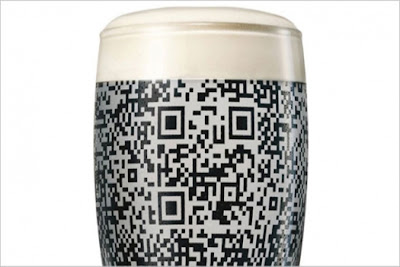Depending on who you talk to, or which study you read, QR codes are either all the rage, or will never truly become mainstream due to Wi-Fi connection, difficulty understanding value proposition, and/or scanning technology by users.
“…no one wants to open their device to a glut of text messages and alerts from codes they’ve scanned.”
According to Marketing Charts, merchants are integrating QR code technology – simply embedding data into a precise grouping of 2D pixels – into their marketing strategies at a far greater rate this year than last, finds a Multichannel Merchant survey released in June 2012. Fully 47% of respondents this year said they are using QR codes, a dramatic increase from just 8% a year ago. A further 15% aren’t yet using QR codes as part of their marketing strategies but are considering doing so. All told, 38% are not using QR codes and aren’t considering them, down significantly from 72% last year. And a recent report from ScanLife found that consumer QR code scans were up 157% year-over-year in Q1 2012.
Mass Appeal and Messaging
QR code technology has been around since the 1990’s – mostly used for inventory tracking purposes – the more recent usage for marketing purposes relies on a smartphone user’s ability and desire to (a) understand why scanning a QR code will benefit them, (b) actually scan the code with a downloaded barcode scanning mobile app, and (c) take an action based on what the code directs them to do. Needless to say, there are a lot of steps, potential technological frustrations and more time needed to complete the entire process than most consumers are willing to give.
This is especially true when companies don’t exactly think through the strategy or actual user experience, and plaster QR codes blindly and reactively. You know you’ve seen them – on billboards where scanning at 65mph is impossible (even dangerous!), in subway stations where there’s no data connection, or on materials & textiles where folds and creases render the codes useless.
Potential Security Pitfalls of QR Codes
In a KISSmetrics blog post, Sherice Jacobs writes, “Spammers are now using QR codes as a way to flood smartphones with their junk . Savvy hackers and scammers can use them to disguise malware downloads and force your phone to send premium text messages non-stop at $1 each. Because some QR code scanners will let you use shortened URLs, there’s currently no telling where those URLs could point to. That’s why, like with your computer, it’s important for consumers to know how their QR scanner works, what’s being downloaded, and whether or not the source is a trusted one.”
Near Field Communication (NFC)
I’ve personally been of the school of thought that QR codes would soon be replaced by scan-less technologies such as Near Field Communication (NFC), which takes the technological component almost entirely out of the equation. With NFC, consumers simply touch their smartphones to an NFC device or ad, and the data is automatically transferred without any scanning, waiting for field focus, etc. No muss, no fuss.
However, while we’re all waiting for NFC to be built into every iPhone, Droid and Blackberry on the market (it’s built into Android’s Ice Cream Sandwich OS, which is what I have on my Samsung Galaxy Nexus), some brands are taking QR codes to the next level – engaging consumers in new ways that may transcend the potential pitfalls of current print marketing usage on POP displays, print ads and product packaging itself.
Philip Congello, Senior Vice President of LAM Design shared the following example with me via email, with a note that said “Knowing that QRs are old news, thought I’d share this cool promotion with you from Guinness!”
This creative application of QR codes, developed by BBDO, is only visible when a pint glass is filled with Guiness – due to the rich, dark color of the beer. “When bar-goers scanned the QR code with their smartphones, the app shared the news to friends that they were enjoying a Guinness via Twitter, Foursquare, Facebook and Instagram updates. Scanning the QR code even sent out the bar-goers’ locations – with the hope being that friends who saw the updates would join their pals at the bar for more Guinness drinking.”
And this one from Korea takes the cake! Global supermarket giant Tesco solved the problem of enticing hard-working, time-strapped Koreans into its stores by bringing the shopping experience to them, with virtual stores based in subways and metro stations (yes, they actually have Wi-Fi in their subway system!). Shoppers were encouraged to browse life-like images of supermarket shelves with their smartphones and scan the QR codes on products to add them to their shopping carts, all whilst waiting for the metro. Their purchases would then be delivered to them at home, with no need to carry heavy bags. Genius!


